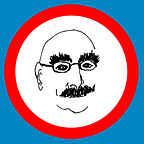4 Ways Prohibition Worsens the Opioid Crisis
It’s no secret that the “war on drugs” has been a colossal failure. But what many people don’t know is that prohibition actually makes the opioid crisis worse. There are alternatives to the war on drugs, and we need to start exploring them if we want to make any progress in solving the opioid crisis. Dr. Jeffrey Singer, a surgeon and senior fellow at the Cato Institute, joined me to lay out the reasons why our current approach has failed. There are better alternatives to the War on Drugs, and libertarians have long advocated for them.
You can listen to the full discussion with Jeff, or read the four ways prohibition worsens the opioid crisis below:
1. Prohibition forces drug dealers to make more potent and dangerous drugs
Jeff makes an analogy to a sports event: what do people typically smuggle underneath their coats? A flask filled with strong spirits, or a 12-pack of beer?
2. Prohibition makes it difficult for people with addiction or who need pain medication to get help
Jeff himself fell for the hysteria around prohibition of morphine and other schedule II narcotics, but he points out that pain drugs have an important place in the pharmacopeia, and to deny them to patients — or discourage their use because of the bogeyman of addition — does them a great disservice.
Those who do develop compulsive using patterns are further disadvantaged by prohibition when they seek out larger quantities on the black market, because of the limited supply available from physicians.
“When you’re using something obtained in the black market, you have no idea as to whether it’s what the person sold to you says it is, what dose it is, what its potency is when it’s mixed with something else like fentanyl. Also, you are unable to openly discuss how to use it safely. So, for example, we now know that 90% of these overdoses are what they call “polydrug,” i.e., a person who overdosed from oxycontin also had in their system cocaine, and alcohol and Xanax or a benzodiazepine.”
These findings suggest a need for harm reduction, and monitoring of withdrawal symptoms, without simply cutting back on legal prescriptions.
3. Prohibition creates black markets that are run by criminals
Not only does prohibition put drug profits in the hands of existing criminal gangs, it actually turns other people into criminals. As Singer explains:
“Prohibition corrupts people. It corrupts doctors. It corrupts pharmacists. It corrupts policeman. Anybody who’s watched any crime shows knows there are corrupt prosecutors and a corrupt politicians. So if anything is to blame for doctors selling prescriptions for $600 a pop — operating these so called “pain clinics,” which are really just ways of funneling prescription drugs into the illicit market — it’s prohibition because it makes it very lucrative, and corruptable people get corrupted by that.”
4. Prohibition usurps the doctor’s authority, leading to coercion and prosecution of innocent people.
In 2016, the CDC issued prescribing guidelines, with the goal of getting doctors to prescribe fewer opioids — saying that you shouldn’t exceed more than 90 morphine milligram equivalents per day in prescribing to in a prescription opioids to a patient. While these were only intended as “guidelines,” many states enshrined them as law, resulting in arrests of physicians trying to manage their patients’ pain as best they can, and even SWAT raids on responsible clinics.
Join Bob’s Libertarian Book Club for weekly “cliff notes” style summaries of popular libertarian titles, accompanying weekly show announcements and highlights.
